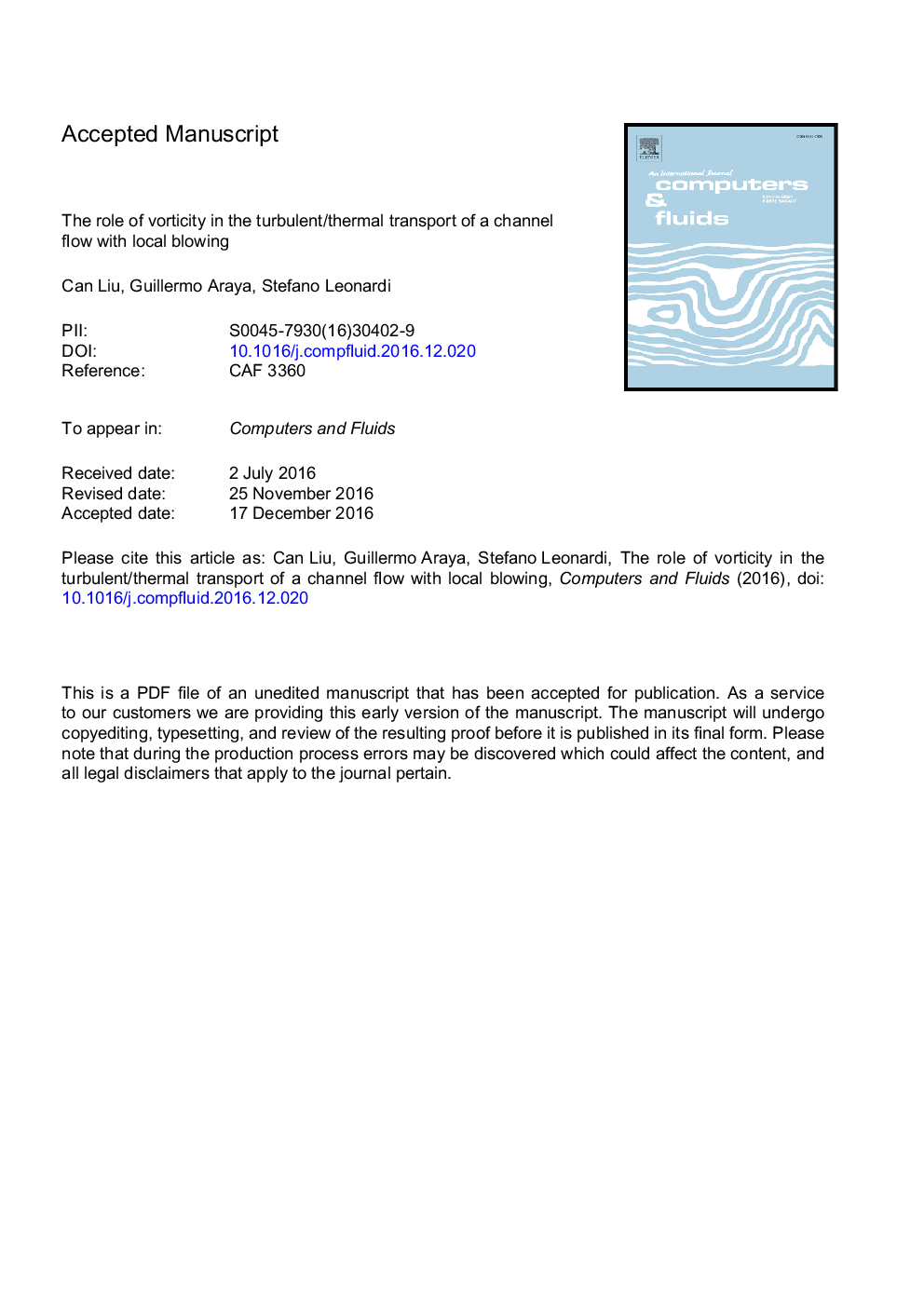| Article ID | Journal | Published Year | Pages | File Type |
|---|---|---|---|---|
| 7156594 | Computers & Fluids | 2017 | 52 Pages |
Abstract
Direct Numerical Simulations (DNS) of an incompressible turbulent channel flow with given local perturbations at the wall have been performed. Steady blowing is applied at the bottom wall by means of five spanwise jets. The perturbing vertical velocities are assigned spatial sinusoidal distributions (i.e., in the streamwise and spanwise directions) with an amplitude of Ao=0.025 based on a unitary velocity to explore its effects on the velocity and thermal fields. The Reynolds number of the unperturbed baseline case is ReÏ=394 (based on the friction velocity and the half-height of the channel) and the molecular Prandtl number is Pr=0.71 with isothermal wall conditions. This study reports the similarity between turbulent and thermal transport and how the correlation between vorticity and thermal fluctuations is affected by steady blowing. It was found that the turbulent transport due to the vâ²Ïzâ²Â¯ contribution was the most affected component by localized blowing, obtaining increases of up to four times in the downstream vicinity of the jets. The thermal and spanwise vorticity fluctuations (i.e., θâ²Ïzâ²Â¯) were found to be highly correlated and highly susceptible to changes by blowing. By examining the co-spectra of θâ²Ïzâ²Â¯, it was concluded that local blowing provoked an evident energy redistribution among two specific spanwise wavelengths in the buffer region, i.e. λz+â 100 and 200.
Keywords
Related Topics
Physical Sciences and Engineering
Engineering
Computational Mechanics
Authors
Can Liu, Guillermo Araya, Stefano Leonardi,
